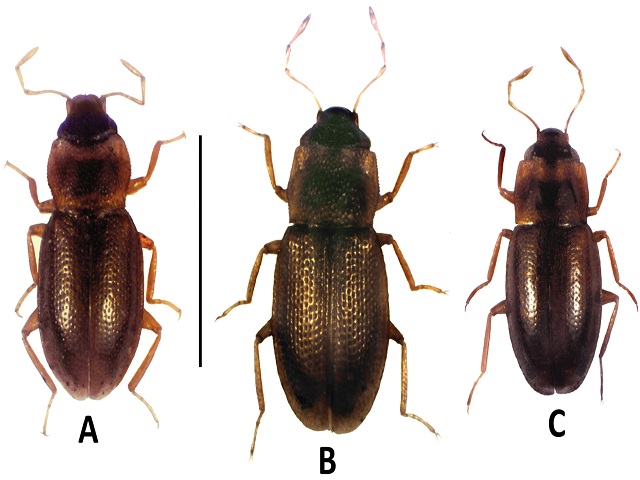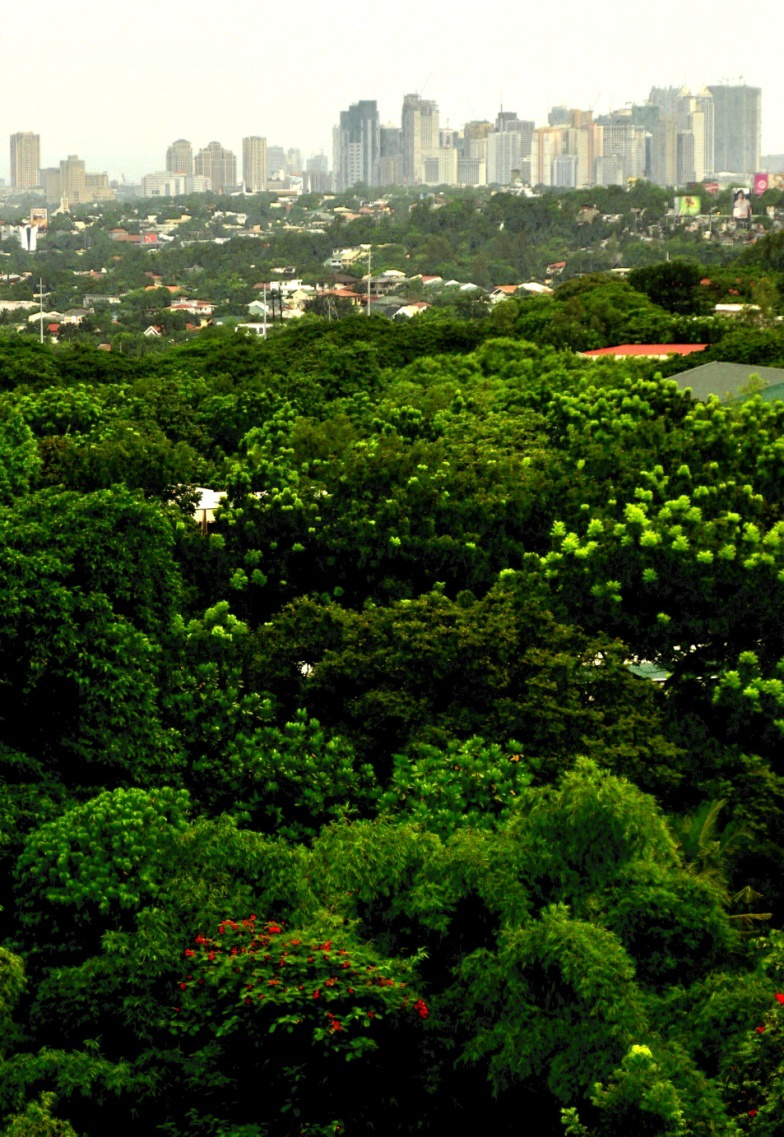Filtered By: Scitech
SciTech
New beetle species discovered on Ateneo de Manila campus
By KIM LUCES, GMA News

Hydraena ateneo, the new specie of water beetle. Dr. Hendrik Freitag, first published in ZooKeys Journal
Ateneo de Manila University: home to the Ateneo Blue Eagles, a plethora of cats, some extremely hairy caterpillars—and now, a new species of water beetle.
Hydraena ateneo, a new species of insect was found inside a waterway in the Ateneo de Manila campus in November of last year.
It is about one millimeter in length and half a millimeter in width, a bit smaller than its close cousin, the H. castamescens. It also has distinctive legs and a male reproductive organ called an aedeagus.
H. ateneo's discovery was not surprising, Ateneo biology professor Dr. Hendrik Freitag wrote in the scientific journal ZooKeys, since the Hydraena genus is mega-diverse and the hydraenid fauna is found in many islands of the Philippines.
But what makes it special is its discovery in the densely populated metropolis that is Metro Manila, where biological diversity is highly unlikely.
“A new species from a highly urbanized megacity is always a surprise,” Dr. Freitag told the International Business Times.
“Nevertheless, this should not lead to the illusion that the ongoing dramatic loss of biodiversity in the Philippines can be reversed,” he said in a press release.
“A large proportion of endemic organisms are closely associated with primary forests. Therefore, it should be an ultimate priority for nature conservation to protect the last remaining rainforests in the country.”
What we know
“All-in-all there are 14 species known from the Philippines, but we expect that the [total] number of species would be a hundred or more in the country,” Dr. Freitag told GMA News Online in a phone interview. This means that there are a lot that remains unknown about this genus.
“We can just conclude from other species of the genus from other areas and assume that these Philippine species behave similarly.”
H. ateneo was found in leaf packs in the spring creek north of the Jesuit Residences, and in a leaf litter in a temporary headwater creek near the San Jose Seminary.
“The terrain is somehow hilly,” Dr. Freitag describes. “It goes down to the Marikina River Valley.” These areas, being temporary waterways, dry up in the summer.
“Most likely they're going to survive as larvae deep in wet gravels; or they survive as eggs and then hatch,” Dr. Freitag said.
“They're also able to fly. So it might also be that the adults migrate to other some other place where water is still present.”
Since they are very small, it is most likely that they feed on biofilms or very thin layers of organismic, microscopic growth such as bacteria and fungi, Dr. Freitag said.

An aerial shot of where the beetle was found. ADMU press release
In preparation for their thesis project, Ateneo Life Sciences undergraduates Kimberly Go and Arielle Vidal took samples of aquatic insects in semi-natural aquatic habitats such as ponds and creeks inside the lushly green campus when they found the brown insect.
Dr. Freitag suggested a taxonomy project of the Hydraena species in Mindoro where he was certain there would be a lot of new species to be discovered. However, he first suggested to try the process within more familiar grounds, the Ateneo campus.
“Let's have a try in the campus, in particular places where Hydraena is usually found,” he suggested.
“It is not sure yet if we're going to find them. I just wanted to tell them that these are the typical places. Let's see if we find water beetles or other aquatic insects.”
Surely enough, they found six known Hydraena species, and a new one.
“I think the students were very amazed and surprised, that even in the campus, new species are here,” Dr. Freitag said.
Go and Vidal pushed through with surveying Mindoro for more new species, and is expected to publish their thesis soon.
The H. ateneo was also found in Cavite by Clister Pangatihon and Dr. Ronald Lagat, facilitators of the Philippine Aquatic Biodiversity Workshop.
It was also found documented in the Natural History Museum in Vienna, Austria that boasts the world’s largest scientific collection of water beetles, a report from Discovery News said. — VC/HS/AMD, GMA News
More Videos
Most Popular



